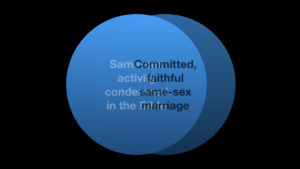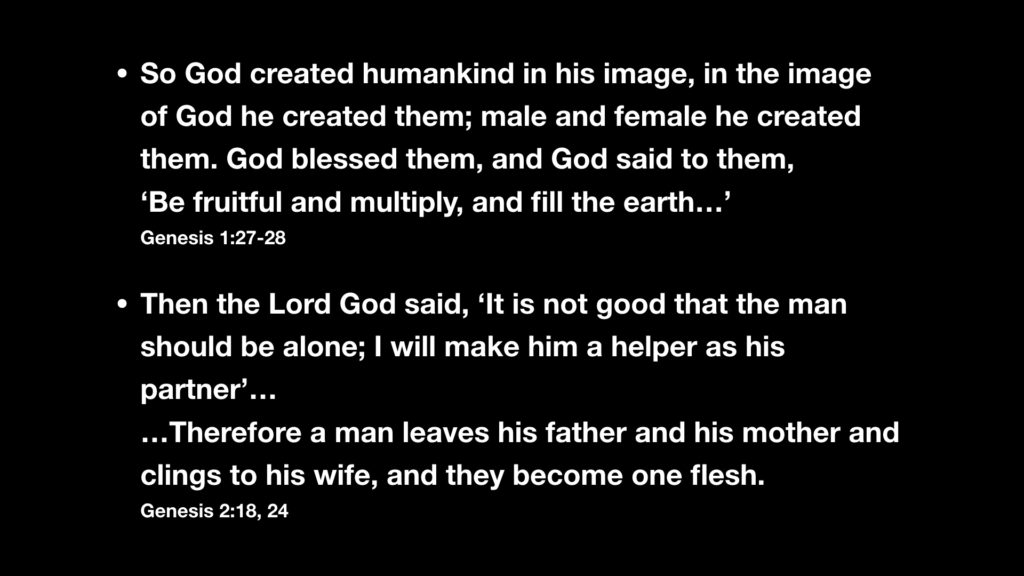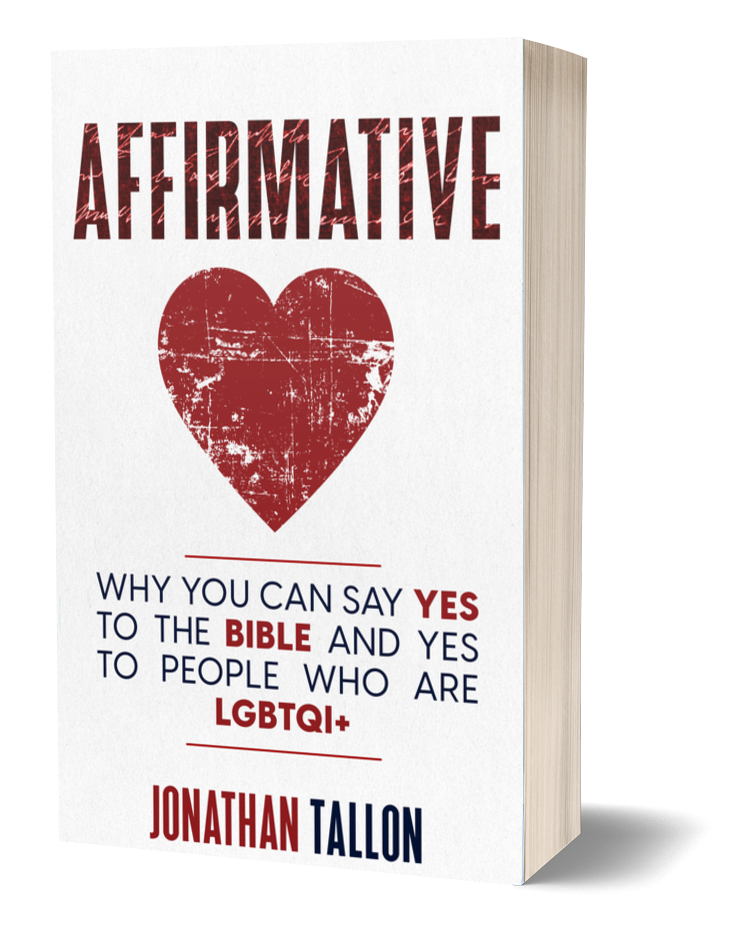What does the Bible say about homosexuality? Nothing – at least, nothing at all directly. Keep reading to find out why.
You’re going to learn why the Bible doesn’t say anything directly about homosexuality, why that’s not obvious to us today, and what that means for us using the Bible when talking about homosexuality.
The plain meaning of scripture?
Most of the time, our problem with the Bible isn’t trying to understand it, but trying to follow it in our daily lives. ‘Love God’ and ‘love your neighbour’ are simple and straightforward. But we keep on trying to obey, and keep on failing, and keep on throwing ourselves on God’s mercy.
Understanding is straightforward, doing is hard – so hard we need grace.

There’s the grand protestant tradition of expecting everyone, not just priests or academics, to read scripture, relying on its plain meaning. And most of the time, that is right.
Most of the time… but not every time.
If we apply our modern, cultural understanding of sexuality when we read the Bible it will mislead us.
Occasionally, we can get tripped up, and not even realise that how we understand the ‘plain meaning’ of a passage is utterly different from what people in the first century would have understood to be the plain meaning.
How come?
When the ‘plain meaning of scripture’ can trip us up
In many areas, the past is like the present. Humans haven’t changed much in 2,000 years. We still get angry, fall in love, like to play, show off, gossip, tell jokes and so on.
But in some areas the changes from ancient Roman culture to today’s western cultures have been immense, and the cultural understanding of sexuality is one of them.
When we think about sexuality, we usually think about who you’re attracted to: someone of the opposite gender, or your own.
We have terms for this. We talk about orientation, and have terms like heterosexual or straight for those attracted to the other gender; homosexual, or gay or lesbian for those attracted to the same gender (or same-sex attracted for some Christians who prefer this label), and bisexual or pansexual for those attracted to both.
So, if I tell you, ‘Keith is homosexual’, you expect him to be attracted to other men, perhaps to be in relationship with one of them, perhaps to have a man as a partner.
And so you open your Bible, and read 1 Corinthians 6:9, and see a reference to ‘homosexual offenders’ (NIV) or ‘homosexual perverts (GNB). You read Romans 1:27, and note the reference to men committing indecent acts with other men. And it seems that the plain meaning of scripture is staring you in the face.
Maybe you’d like it to be otherwise. Maybe you don’t understand what’s so wrong with homosexuality. But it’s there, in black and white. The plain meaning of scripture. The Bible appears to say that being homosexual – gay or lesbian – is not OK.
But you’re not comparing like with like.
How different was the ancient Roman approach to understanding sexuality from ours? Completely.
The ancient Roman understanding of sexuality
Take a typical, happily married man, who is a master of his household (happily married from his point of view).

This man could, and often would, besides having intercourse with his wife, also rape his male and female slaves, rape boys, and sleep with prostitutes, and neither his masculinity nor his sexuality, nor his honour, would be in question at all.
In ancient Rome, sexuality wasn’t defined by which gender you had sex with, or who you were attracted to, but whether you were the dominant, active, penetrating partner, or the submissive, passive one.
So long as a freeborn man was the dominant partner, little else mattered so long as you weren’t sleeping with someone else’s wife or daughter – slaves and prostitutes didn’t count.
Sexuality was not tied to orientation or gender, but to action and power. Not who you were with but what you were doing.
To be the active, penetrating partner was to be virile and manly. To be a passive partner was to be weak and effeminate – irrespective of gender.
In particular, and most alien to our culture, pederasty – that’s intercourse with boys by men – was commonplace and not sanctioned either legally or socially – it was simply part of everyday life.
An ancient Roman’s masculinity could be demonstrated to others by aggressive sex with a slave, whether a boy or a woman. Boys were seen as equally as desirable as women – until the boys started to grow a beard, when they became off-limits (so the boys involved would typically be aged from about ten to eighteen years old).
Same-sex activity at the time of the New Testament was abusive
What this means is that same-sex activity by an adult male was practically always abusive. As an example, the Roman poet Martial uses the term ‘cut to pieces’ for the passive partner. The passive partner was seen as ‘used, humiliated, and physically and morally damaged’ (Ruden, 2010, 49). The active partner could carry on, his honour intact, using boys and discarding them as they grew older.
It is telling that the Romans have no word for ‘homosexual’, but two for the boy slave who was kept precisely for this purpose and abused in this way by his master (deliciae and concubinus).
Let’s be clear. If, in the ancient Roman empire, you talk about men having sex with males, everyone would assume you meant men raping and abusing boys, usually slaves.
Were there same-sex couples at the time of the New Testament?
But what about ancient same-sex couples? Weren’t there loving gay and lesbian couples? After all, I said human nature hasn’t changed, and some people back then must have been gay or lesbian as we understand it today.

I’m sure there were some people 2,000 years ago who were gay. And I’m sure that some would have formed adult, loving relationships. But they mainly remained hidden from the rest of society – a secret that if it became known would destroy the reputation and honour of at least one of the couple.
The evidence that we have mostly comes from private material: charms, spells, graffiti, or from insults from others. There simply wasn’t the cultural space for a committed public relationship between adult males in Rome at the time of Paul.
In today’s society, pederasty is condemned, and adult loving same-sex relationships mainly accepted. But in Roman times, pederasty was accepted, and to have intercourse with an adult male was not.
Jewish and Christian criticisms of same-sex activity
This cultural approach is alien to us, so hard to accept. But Jewish criticisms of male same-sex activity in Roman times assumed that one of the participants would be a boy – pederasty. Here’s an example from Philo, who lived about the same time as Paul, and like Paul was Jewish.
‘And let the man who is devoted to the love of boys submit to the same punishment, since he pursues that pleasure which is contrary to nature…’
Philo, Special Laws 3.39
The earliest Christians also attacked pederasty as something routinely accepted by society but rejected by the Church. The earliest interpretation of Romans 1:26-27 that we have (by Athenagoras, a second century Christian) assumes that Paul is talking about pederasty:
‘For those who have set up a market for fornication and established infamous resorts for the young for every kind of vile pleasure, who do not abstain even from males, males with males committing shocking abominations… …These adulterers and pederasts defame the eunuchs and the once-married…’
Athenagoras, Apology 34.
And this assumption carries on through the first few centuries of the church. Writer after writer condemns pederasty, calling it ‘child corruption’ (see the Didache 2:2; the Epistle of Barnabas 19.4; Justin Martyr, Dial. Trypho 95; Clement of Alexandria, Paedagogus 3.12; Athanasius, Vita Antonii 74, Gregory of Nazianzus, Adv. Eunomianos (orat. 27) 6).
This, then, is the background to the world of the New Testament. It was a world where a freeborn man was expected to demonstrate his masculinity and dominance through intercourse with his wife, his slaves and prostitutes, whether the slaves or prostitutes were male or female.
Why talking about ‘homosexuality’ is misleading
This shows how misleading using terms like ‘homosexuality’ is when talking of the New Testament.
- The ancient world was generally uninterested in questions of orientation (whether you fancy males or females), but much more concerned with questions of power and action.
- There was no term for ‘homosexual’. Terms used defined who was the active, dominant person and who was classed as the passive, submissive participant.
- If anyone referred to an adult man having intercourse with males, everyone would assume that the males were boys. Other assumptions would include that no equal relationship was involved, and that the boy would be humiliated.
But what would not be assumed is that the adult male only had intercourse with boys or was only attracted to males; the listener would expect the man also to sleep with his wife and also have intercourse with female slaves and prostitutes.
How should this affect our reading of scripture?
How does this affect our reading of scripture? It should, at the least, stop us from what turn out to be in this particular instance misleading appeals to the ‘plain meaning of scripture’ when debating this issue.
When we look at passages about sex, the wider context was one where male same-sex activity generally meant pederasty – abusing boys. Recognising this as the background raises the question as to how we apply scripture that was written in a sexual cultural context vastly different from our own.
But what about Romans 1:26-27 and homosexuality?
At this point some of you might be wondering about the controversial verses in Romans 1:26-27. Even if the general background was one of pederasty, surely here Paul is plainly referring to men having sex with men and women with women?
Again, this is one of those unusual cases where a combination of translation and context means that we can be seriously misled in a number of different ways.
There isn’t space here to unpack this in full, so check out my other post on Romans, but Paul actually writes ‘males with males’ and not ‘men with men’ (many translations mask this).
The use of ‘males’ was a common one within the Greco-Roman culture to recognise that one of the participants would be, not a man, but a boy. This is one example of why we need to appreciate how radically different the sexual culture of Ancient Rome was from that of ours today.
Conclusion
In our modern world, ‘homosexuality’ might conjure up images of loving couples of the same gender in long term relationships. The world of the New Testament had no word for homosexuality and precious little visibility of anything like our image.
For the ancient world, male-male sex meant pederasty, it meant abuse, it meant rape, it was something married men did, and it often involved slaves or prostitutes or slave prostitutes.
Do condemnations of that mean that we have to condemn loving, faithful relationships now? What does the Bible say about homosexuality? As we understand homosexuality today – it says nothing directly at all.
This post is similar to one first written by me for the ViaMedia website, May 2019.
Found this helpful? You can now get the material from this website and more in a book. Affirmative: Why You Can Say Yes to the Bible and Yes to LGBTQI+ People is available at Amazon and other major retailers. You can find out some more about the book here.
Specific passages from scripture used in debates over homosexuality
There are only a few verses in the Bible that are directly relevant to the debates over homosexuality and the interpretation of scripture. I look at each of these verses in my other posts, so you can go into more depth elsewhere on the website.
Here are the verses that are referenced:
Genesis 1 & 2
Genesis 1 and 2 are often appealed to as showing that God only approves of marriage between people of different genders, which can lead to children. But there is some faulty logic here – the accounts certainly highlight how God blesses and approves of marriage between men and women.
But that doesn’t mean that God disapproves of every other pattern. God can also bless couples who can’t have children, people who are single through not finding a partner, and those who choose to be celibate. Similarly, God might also choose to bless couples of the same gender.
Read more in the post Does Genesis Rule Out Adam and Steve?
Genesis 19
This passage is the account of what happens to the town of Sodom when the people there try to gang-rape two angelic visitors to Lot.
There is a similar account in Judges 19, where townsfolk want to gang-rape a male visitor. In that case, a female concubine is given to the crowd, who use her and leave her dying on the steps of the house.
This highlights that the gender is not important in these cases – rape is about abuse of power and not about sexuality. Trying to use Sodom as an argument against homosexuality would be like trying to use Judges as an argument against heterosexuality.
Read more on my post on What Has Sodom to do with Homosexuality?
Leviticus 18 & 20
The Levitical commands tell the ancient Israelites ‘not to lie with a male as with a woman’. The background to these verses was a culture where the two most common settings for male same-sex activity were pederasty (as above), or also as part of pagan fertility gods and goddesses worship.
Additionally, we need to consider why we pick out these two verses, when Christianity has long held that the time for the Law has ended, that ‘Christ is the end of the Law’ (Romans 10:4).
Read more at Does Leviticus Mean Homosexuality is an Abomination?
Romans 1:18-32
I touch on this in the article above, but there is much more to say. Besides pederasty, the other context for Romans 1 may well be Paul attacking the practices associated with fertility goddess worship (like Cybele and Aphrodite).
Find out more at Condemned or Not? St. Paul, Romans 1 and Homosexuality.
1 Corinthians 6:9-10
In a list of immoral behaviour, Paul uses a word that is translated by the NIV as ‘homosexual offenders’. There are some difficulties knowing exactly what Paul meant, because he was the first to use it in the Greek literature which has survived.
I think it probable that Paul is referring to men who commit pederasty, the most common-place form of male same-sex activity (as explained above).
You can find out more at St Paul, 1 Corinthians and Homosexuality.
1 Timothy 1:8-10
In this letter, the same term is used as in 1 Corinthians, so similar issues are involved in working out what Paul means. You can find out more at the 1 Corinthians post.
Further resources
If you want to explore the issues around the Bible and sexuality in more depth, have a look at the annotated bibliography page. It covers much of the most important literature on this subject, with contributions from all sides of the arguments.
A separate but related issue is what the Bible says about transgender people. I also have a video and post on this topic (and some of the bibliography relates to this area).

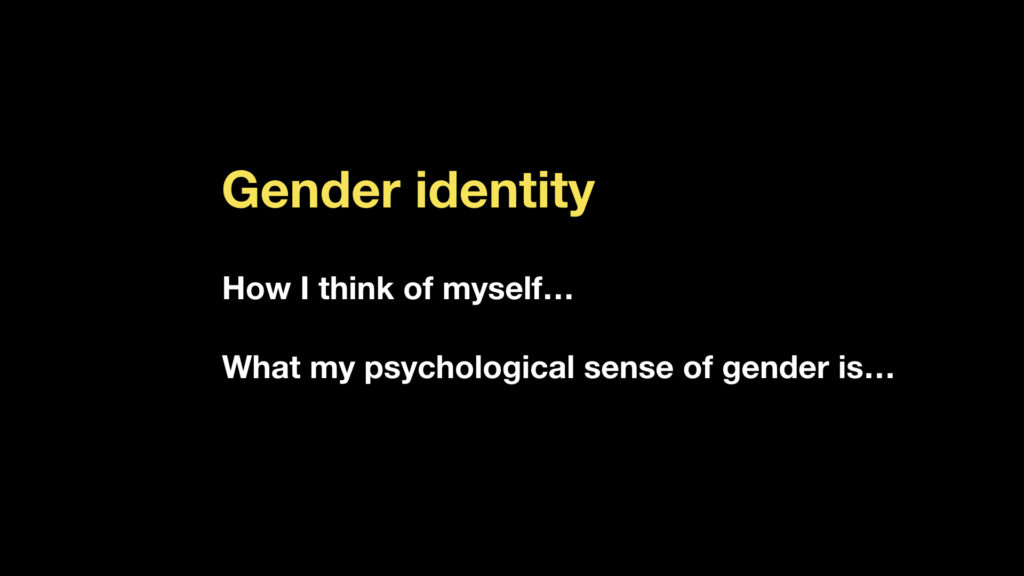
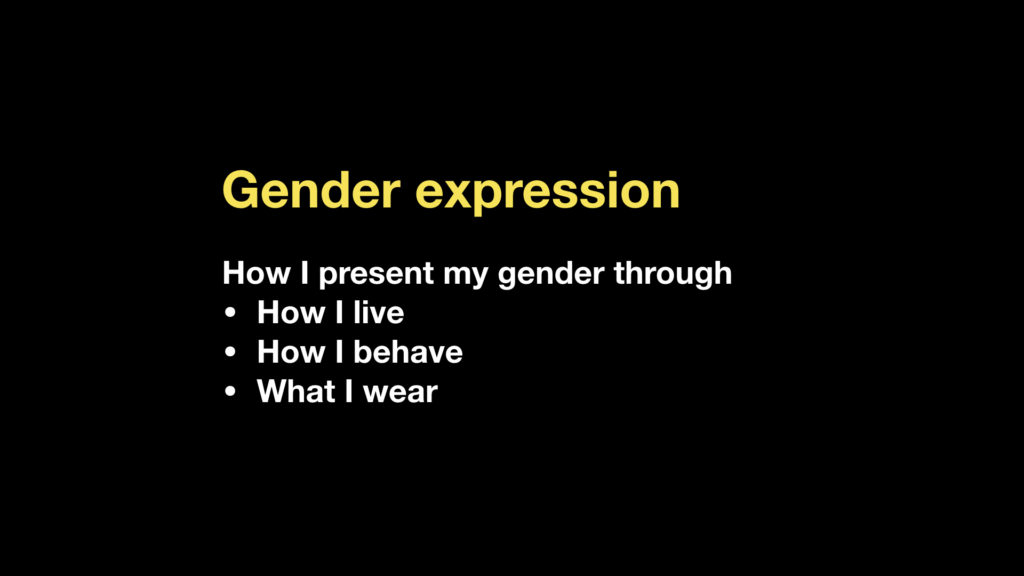
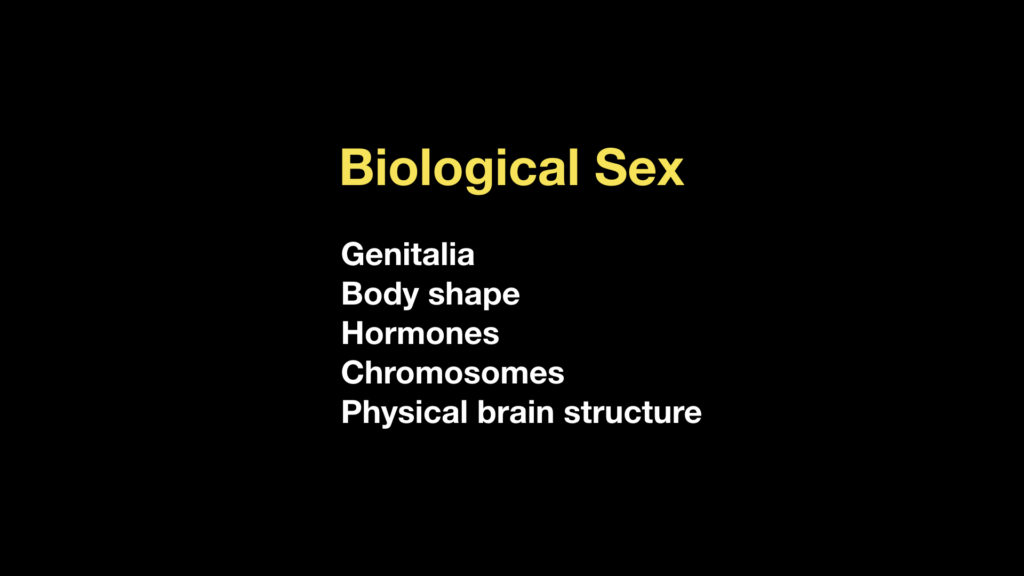
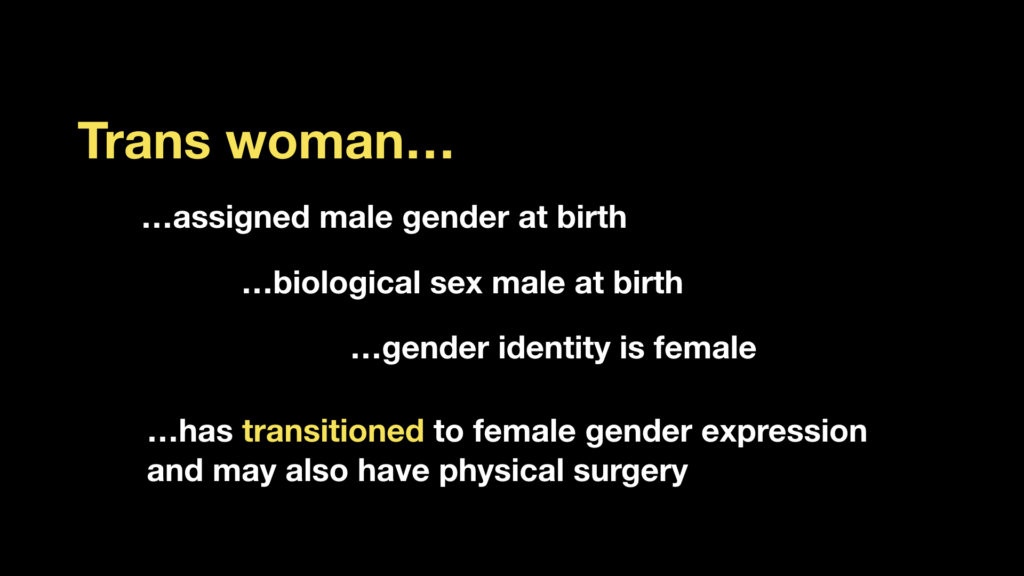
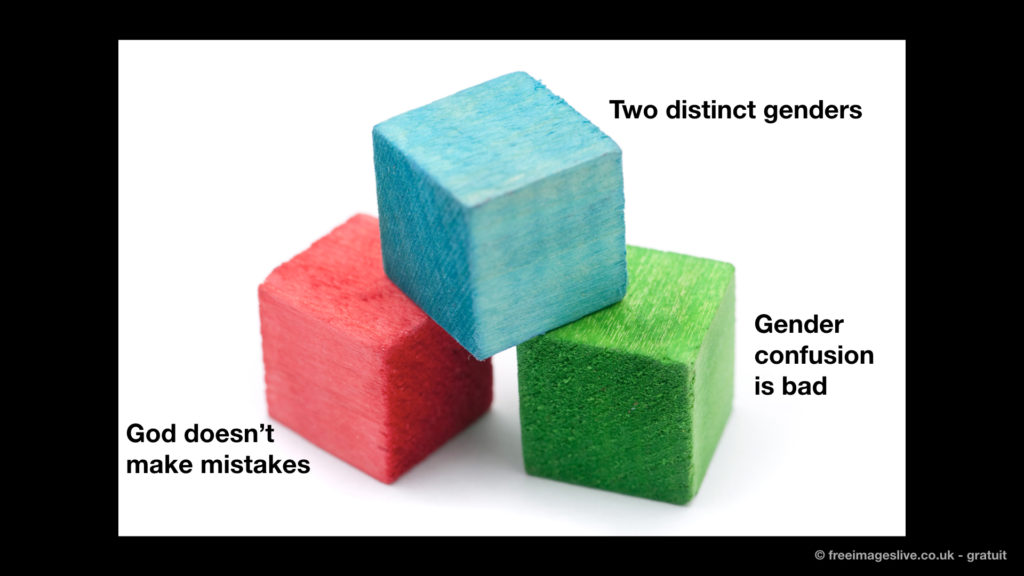
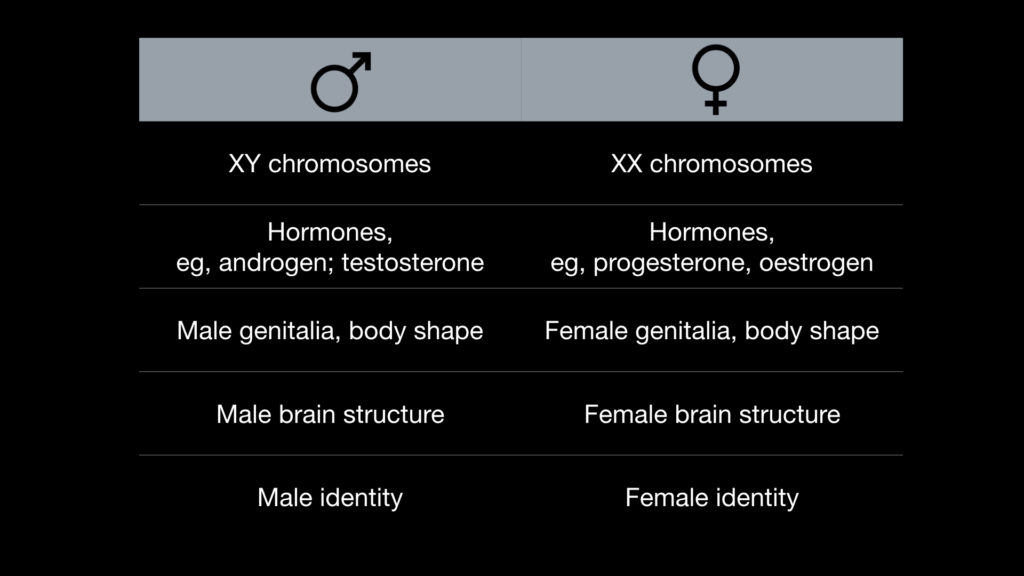
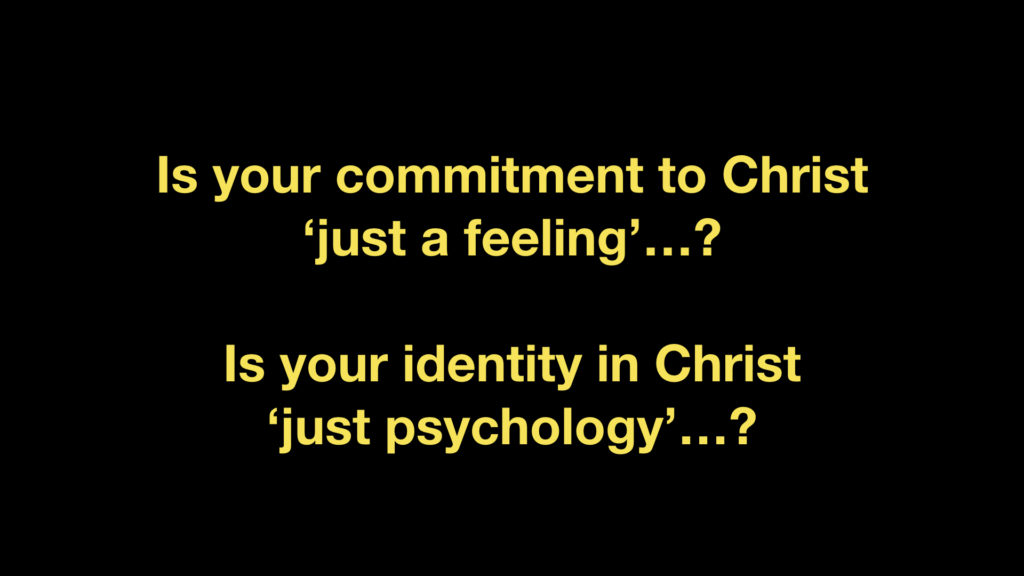
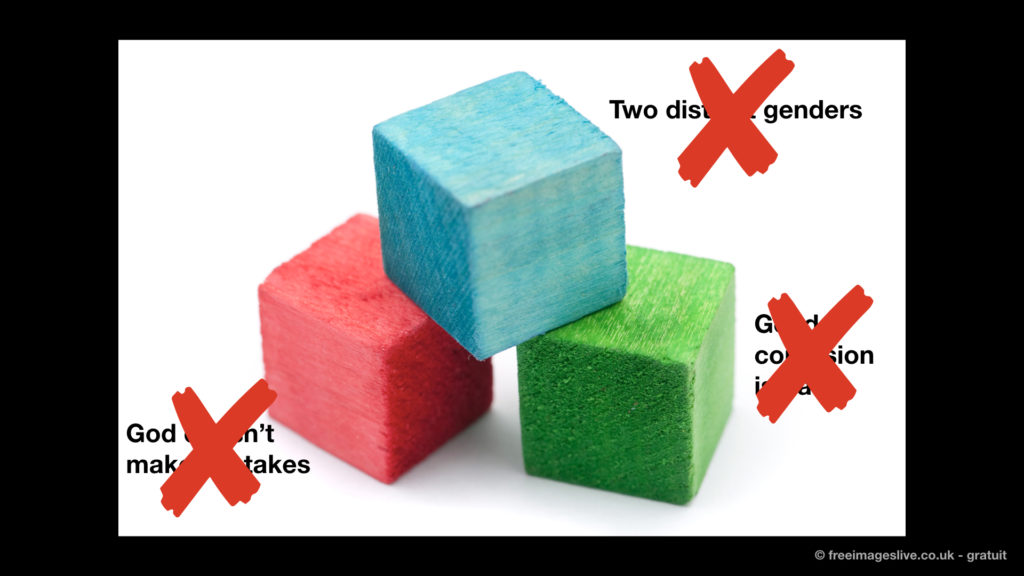


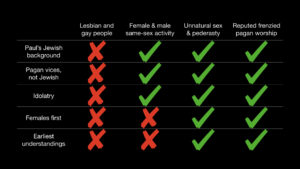
 Those on the non-affirming side sometimes argue: Jesus was a first century Jew, any first century Jew would condemn homosexuality, therefore Jesus would and does condemn homosexuality.
Those on the non-affirming side sometimes argue: Jesus was a first century Jew, any first century Jew would condemn homosexuality, therefore Jesus would and does condemn homosexuality. First of all let’s look at Jesus talking about marriage. The passage comes from Matthew 19 (there is a similar account in Mark 10). Jesus is asked how easy divorce should be. This was a current debate – one school of thought arguing that a man should be able to divorce his wife for any reason at all, whereas another school argued that he should only be able to divorce her in cases of sexual immorality.
First of all let’s look at Jesus talking about marriage. The passage comes from Matthew 19 (there is a similar account in Mark 10). Jesus is asked how easy divorce should be. This was a current debate – one school of thought arguing that a man should be able to divorce his wife for any reason at all, whereas another school argued that he should only be able to divorce her in cases of sexual immorality.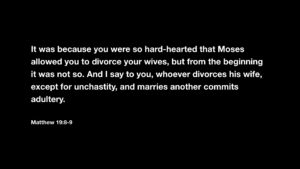 These verses need careful unpacking and handling. Many protestant churches hold that, in certain circumstances, remarriage after divorce is possible, and I agree with that.
These verses need careful unpacking and handling. Many protestant churches hold that, in certain circumstances, remarriage after divorce is possible, and I agree with that.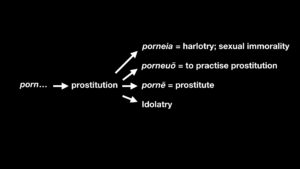 Secondly, a bit more on the word porneia (the singular form). It comes from the root porn – which refers to prostitution. So the word porneia would evoke sleeping with prostitutes in particular, or sleeping around more generally. It was also used within Judaism to refer metaphorically to idolatry.
Secondly, a bit more on the word porneia (the singular form). It comes from the root porn – which refers to prostitution. So the word porneia would evoke sleeping with prostitutes in particular, or sleeping around more generally. It was also used within Judaism to refer metaphorically to idolatry.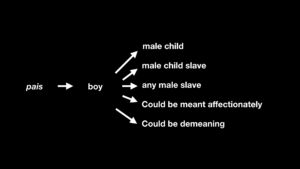 The word pais here can have multiple meanings – the slave may well have been a boy, but, just as in the antebellum South in America, ‘boy’ could mean any male slave.
The word pais here can have multiple meanings – the slave may well have been a boy, but, just as in the antebellum South in America, ‘boy’ could mean any male slave.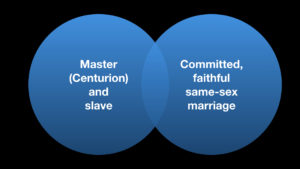 And thirdly, this is not a relationship that I want to appeal to or hold up anyway.
And thirdly, this is not a relationship that I want to appeal to or hold up anyway. And so eating the wrong food makes you less holy [Lev. 20:25]. Having a tattoo makes you less holy [Lev. 19:28]. Wearing clothes from different fibres – like wool and linen together – makes you less holy [Lev. 19:19]. Even having a physical disability makes you less holy [Lev. 21:16-23].
And so eating the wrong food makes you less holy [Lev. 20:25]. Having a tattoo makes you less holy [Lev. 19:28]. Wearing clothes from different fibres – like wool and linen together – makes you less holy [Lev. 19:19]. Even having a physical disability makes you less holy [Lev. 21:16-23].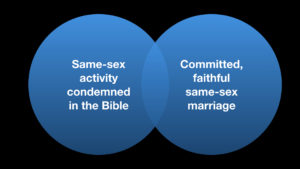
 And what about tattoos? Should everyone with a tattoo be cut off from the community? Or what about clothes with mixed fibres – I hope you don’t have any cotton-polyester blends in your wardrobe. And don’t even get me started on ham and cheese sandwiches.
And what about tattoos? Should everyone with a tattoo be cut off from the community? Or what about clothes with mixed fibres – I hope you don’t have any cotton-polyester blends in your wardrobe. And don’t even get me started on ham and cheese sandwiches.